Among the landscape designers, the vocabulary of Blue Chip is considered one of the best representatives of low-speed evergreen shrubs. His shaggy thick branches, slightly raised above the ground, form a spectacular live carpet, and the sizo-blue painting of the needle allows you to experiment and create original vegetable compositions. How to plant a shrub? What care to provide a long-term conifer? How is culture prolonged? All about the process of growing juniper variety "Blue Chip" - read in this selection of material.
Juniper Blue Chip, plant description
- Blue chip belongs to the well-known genus of evergreen coniferous shrubs from a numerous family of cypress.
- This type of wood juniper, referred to as the "juniper prostrate", as well as the "Juniper horizontal", is characterized by a spectacular decorative species, respectively, its name.
- Often, the American-Canadian variety of Juniper Blue Chip occurs under similar names: Juniper flat Blue chip, juniper soil Blue chip, juniper horizontal Blue chip, juniper open blue chip. The word "Blue SHIP" itself is literally translated as "blue chip".
- In vivo, the horizontal juniper is widespread in Canada and North America. Most often, the juniper thickets can be found in the mountainous terrain and along the coast of lakes and water bodies. Nowadays, juniper has adapted perfectly throughout the territory of immense Russia.
- This type of shrub refers to the fluttering low-volume forms of juniper and reaches a height of not more than 20-60 cm. But in the width of the "shaggy" branches of the dwarf plant can reach 1.5-2 meters.
- Croon from a bush is thick, lush, branches slightly raised up. Needle juniper needles dense and short, length from 1 to 8 mm, scaly texture. It is noteworthy that the painting of the needles can vary slightly depending on the time of year: in the summer it has a sizo-bluish tint, the brown-lilac tones are added in the fall, and in the winter of the needle becomes saturated purple.
- The perennial is considered a bombstorm and forms so-called. "Shishko - berries", maturing on the 2nd year of the life of a shrub. Fruits have a dark color and spherical shape.
- The growth rate of a blue juniper is low. Thus, a 10-year-old shrub reaches a height of no more than 20-25 cm, and its crown diameter is about 1.5-1.7 meters. Thus, the perennial grows mainly in the horizontal plane.
- This variety of a perennial conifer is distinguished by increased stress resistance and easily transfers "smalleriness" and "ridicity" of modern cities. In addition, the shrub perfectly cleans the air in the range of the nearest 10 meters. This powerful "generator" of clean air is capable not only to saturate the air with useful phytoncides, but also to clear the environment from pathogenic microbes.
- Other virtues of the varieties are: endurance, unpretentiousness and high frost resistance.
Application of Juniper Blue Chip
- In addition to its high decorative qualities, the juniper of this variety is also a medicinal plant. Useful are small berries that resemble miniature cones.
- Shishko-berries are used by folk healers for the treatment of the genitourinary system and a number of skin diseases (eczema, dermatitis, etc.).
- The fruits of evergreen long-term plants are also used in cooking, as a spicy seasoning. Ground berries are added to sauces, marinades, meat, first dishes and even drinks (Kisel, Kvass). Seasoning has a special tart-sweet taste with fresh coniferous aroma.
- The juniper branches are suitable for the preparation of fragrant essential oil used in diseases of the radiculitis, rheumatism, polyarthritis. The decoction of juniper conifers helps to heal allergies, and from the roots you can prepare an effective remedy for diseases of the respiratory system (bronchitis, tuberculosis).
- Wood juniper is used to make objects such as pencils and household items (dishes). It is interesting that the wooden tableware from juniper rocks has long been considered antibacterial and has previously stored milk in it, because in such containers it did not contacted for a long time.
Juniper Blue Chip, landing features
Juniper variety Blue Chip can be bought in specialized garden shops or nurseries. By purchasing landing material, it is important to pay attention to the following points:
- Seedling should be bought with a closed root system, i.e. in a container or pot.
- If the juniper with open roots is acquired, they must be wrapped in a moistened burlap, and better are surrounded by a wet earthy room.
- Seedl branches should have an increase in this year.
- The trunk of young culture should be smooth, without visible cracks and flaws.
- Saving a healthy seedling flexible and not brittle.
- The color of the crown is uniform, without brown-gray splashes and whiten spots at the base of the needles.
Bought juniper seedlings most often in containers or pots with the addition of prolonged action fertilizers. When landing such seedlings, the roots are not injured, and the plant quickly carries out in a new place. Before removing a container seedling, the plant is plentifully water.
You can also find the original shape of the conifer - Juniper Blue Chip on the strain.
Consider the key regulations landing juniper Blue chip.
Place and time to landing juniper Blue Chip
Where is it better to plant a juniper Blue chip?
- Place for landing shrubs are chosen taking into account the preferences of the perennial. It should be a spacious and well-lit plot. Lightweight is also allowed.
- Shrub negatively reacts to the moistened (with moisture stagnation) and saline soil types. The best option for evergreen perennial is a nutrient peeler (a loamy) and well-drained primer with a weakly acidic (pH 5-7) of the medium is also allowed. The coniferous perennial refers to the group of acidophiles - plants preferring the increased acidity of the soil.
- It is important to initially correctly choose a place for planting many years of culture, as Juniper poorly tolerates a transplant, especially adult rooted shrubs.
When is it better to plant a juniper Blue chip?
- Juniper bush with an open root system should be seen in spring (in the first half) or in the fall, while seedlings with a closed root system and a holistic earthwomen - throughout the growing season.
- For the cold northern regions, only the spring dates for the landing are acceptable so that the seedlings are fully captured and successfully overwhelmed.
Agrotechnology landing juniper Blue chip
- Before boarding the seedlings are watered well with water, removed from the container, trying to preserve the natural square of the earth.
- Preparation of a place for landing includes: Pumping of the site, the removal of weeds, making fertilizers. Nourishing fertile soil will allow culture to quickly root in a new place and look as attractive as possible.
- The landing pit should be 2 times more spacious than the available roots of the seedling. Usually its depth is about 50 cm, and the width is doubled, given the surface location of the roots of juniper.
- The best landing mixture for planting a shrub will be the use of 3 components taken in equal proportions: ferry soil, sand, peat. The constant components for landing of evergreen shrub is an acidic peat that allows you to resolve the municipal system necessary for juniper. The only exception is originally acidic soils. The alkaline medium of the soil can be additionally acidified by climbing the rolling circle after planting the pine bark or a coniferous sweetheart.
- A small amount of mineral fertilizers intended for coniferous crops can also be added to the prepared soil mixture.
- It is also possible to use the finished soil substrate prepared for planting coniferous plants. The acquired substrate is mixed (1: 1) with garden soil.
- If the soil on the garden is dense and lowered, the pit is better to lay the layer (20-25 cm height) of the drainage from the broken brick or gravel.
- Plant seedlings quickly so that their roots are not swept away. The main condition is to preserve the existing earthlom and not damage the young roots of the plant.
- So, on the bottom of the landing pits, the drainage layer is placed, 1 \\ 3 part of the soil mixture is plugged, then the soil shed with water and plant the horizontal juniper, gradually falling asleep the roots of the remaining soil. The pit is plugged, sealing soil to avoid the formation of air emptiness.
- The correct landing of the juniper seedling involves the location of the root cervix at the soil level. Do not dance it into the ground.
- After landing, the juniper bush is abundantly watered.
- If several thumbs of perennial are planted on the site - the distance between copies can be from 0.5 to 2 meters, taking into account the further growth of the plant in the horizontal plane. The interval between the bushes depends on the landscape composition and the design of the gardener.
Juniper Blue Chip, Care Rules
Presented variety juniperthe horizontal is equally favorably tolerates both frosts and heat, which is an important factor for the areas of constant change of temperature modes.
Consider the main features of the care of evergreen culture.
Juniper Blue Chip, watering and loosening
- Juniper needs regular temperate irrigation. The average irrigation rates for an adult shrub - 1-2 times a week, subject to the absence of natural precipitation. The plant can easily endure even long periods of drought.
- Especially important with watering for a young shrub in the first year after landing. This is due to the fact that the roots of the seedling have not yet become too much, and therefore, they are not capable of fully consuming moisture and nutrients from the soil.
- In the arid period, the juniper responds positively to sprinkling the crown.
- The soil loosening is carried out carefully, not deep enough to damage the surface roots of juniper bushes.
- In order to avoid rapid evaporation of moisture, the spurious circle is better to climb the compost or humus, sprinkled with sawdust, pine bark or wood chip. The height of the mulching layer is about 6 cm. The insulated soil is watered much less often, i.e. Only as drying.
Juniper Blue Chip, feeding and fertilizer
- Feed the perennial is recommended three times for the entire growing season.
- Spring use nitrogen-containing fertilizers, allowing to stimulate the growth and development of the green mass of the shrub.
- In the summer it is best to use nutrient complexes with phosphorus content.
- In the autumn, the most favorable fertilizers for the conifer are mixtures with the presence of such an element as potassium.
- In addition to mineral complexes, the juniper reacts perfectly to the introduction of organic fertilizers (humid, compost) into the soil. The organizing agent not only contributes to the improvement of the soil structure, but also allows the soil bacteria to actively function in the soil.
Juniper Blue Chip, Pruning
- Early spring shrub Blue Chip needs sanitary trimming. At the same time remove all damaged, dry or old branches, lost their decorativeness. Frosted shootings of shoots are also cut off.
- In a special forming trimming, the juniper does not need this species.
Juniper Blue Chip, Fighting Diseases and Pest
- Evergreen Blue Juniper may be amazed by pests like a wave, a web tick, caterpillar and a shield. In order to avoid the appearance of parasites, shrubs in spring and re-, in summer, treated with any suitable insecticide ("Aktara", "Aktellik", "Confinal", "Engio"). Spraying is carried out twice, with an interval of 10 days.
- As for the disease, the perennial sometimes suffers from the root rot, when the bush begins to dry, and the branches are formed on the branches. In this case, it will take spraying the crown by fungicidal preparations, such as "Svitch", "Fundazol", "Maxim", "Topcin", "Sorrow", "Quadris", etc. The same substances are used as a preventive treatment of the plant, conducted 1 time in month. A solution of burglar fluid is also used for prophylactic spraying.
- Another disease that affects juniper - rust. Symptoms of the disease are the "rose" of the needles with the simultaneous drying of the shoots. In the presence of these signs, the shrub must be treated with Arzerid. An additional measure of the fight against the disease and the recovery of "immunity" will be the filtering of plants by microfertres.
Juniper Blue Chip, preparation for winter
- Juniper Blue Chip is absolutely not afraid of frosts and does not need shelter for the winter.
- The only exception is young seedlings, which for the winter should be closed with peat (layer 10-15 cm), and cover the crown with a sweetheart.
- In the first after planting, the spring, the juniper bush is loosely covered with a grid or agrovolok to avoid solar burns.
Juniper Blue Chip, reproduction of the plant
Most often, the juniper shrub breeds or cuttings. Less often is a seed method of reproduction of perennial.
- Reproduction by chains - The most acceptable way for low-spirited varieties of juniper. In reproduction, it is necessary to choose the most developed and healthy lower branches of the shrub, prepare the ground for rooting these shoots (explode, add peat with sand, moisturize) and fasten the lands to the ground using a bracket (for example, from thick wire). Within half a year - a year, the tanks begin to form additional roots. During this period, it is important to ensure regular soil moisturizing. After final rooting, the tanks are separated from the maternal bush and transplanted at a permanent place.
- Shining - A more complex and time-consuming method of reproduction of coniferous shrubs. Short side shoots are used as landing cuttings. Elegations must have so-called. "Heel" and be in length 10-12 cm. The cuttings are cut in the early spring until the kidney awakening. The cuttings below are purified by the needles (about 5 cm) and withstand 30 minutes in a special solution that stimulates the root formation. Then shoots to the nutritional loose substrate at a temperature of 15-18 0C. Suitable, for example, a mixture of sand and peat. Gradually, the temperature regime in the room is changed to + 20-23 0C, providing regular watering cuttings. The rooted cuttings are planted in the garden in the summer, and in winter, the seedlings are covered with a film. For the 2nd year of life, the seedlings for the winter is no longer necessary.
- The seed method is considered ineffective, long and time consuming. In addition, the reproduction of seeds does not guarantee the preservation of the varietal signs of the plant.
Juniper Blue Chip in Landscape Design
- Juniper Horizontal Blue Chip has long been taking a leading position in the field of the best landscaped plants. Thanks to high decorative qualities, the grade received in 2004 in Poland a high award of connoisseurs of decorative garden cultures of the whole world.
- A spectacular evergreen shrub with "shaggy" blue branches does not lose its attractiveness throughout the year.
- Coloring and effectively look like a shrub of blue chip shrubs near water bodies, among the stones, at the foot of the Alpinarians and simply on the city clubs.
- Decorative ensembles and compositions using juniper Blue chip looks truly colorful and noble. Juniper thickets can serve as an excellent background for many floral plants.
- The plant favorably decorates walls and borders, can be used as a green fluffy carpet, great for making mixtures.
- Combining juniper with different coloring needles and the form of the crown, it is possible to form an unusual plant composition for coloring and texture.
- Landing the perennial, in addition to the decorative component, also has practical importance: the shrub strengthens the slopes, the slopes and purifies the air from harmful substances and pathogens.
Thus, according to the reviews of many gardeners and professional landscape designers, the juniper Blue Chip is rightfully recognized as a highly elective coniferous shrub that allows you to enjoy any lawn or a household plot. The evergreen conifer not only decorates the territory, but also purifies the air, saturating it with useful phytoncides.
Additional advantages of the spectacular perennial shrub is: endurance, unpretentiousness, frost and drought resistance. It is absolutely not difficult to grow on the site such a juniper is absolutely not difficult and neither the novice gardener.

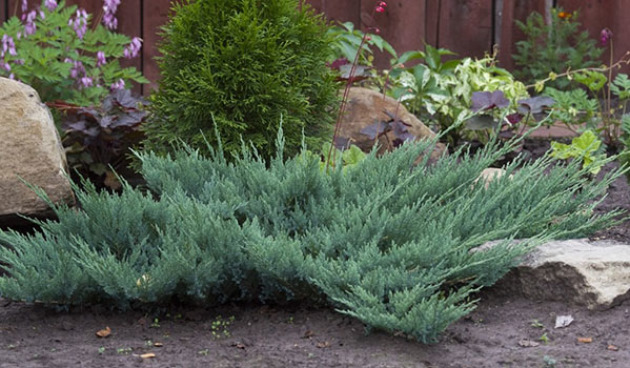
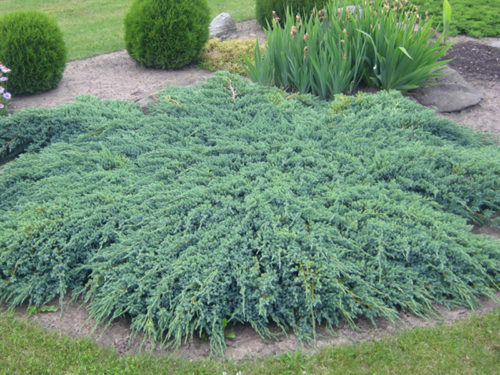

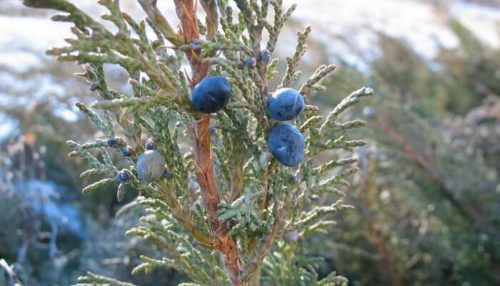


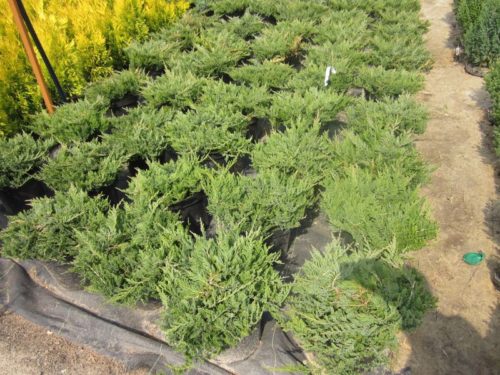
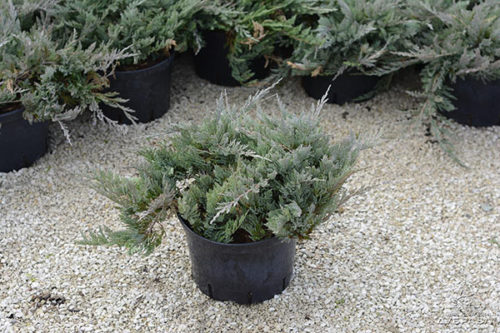

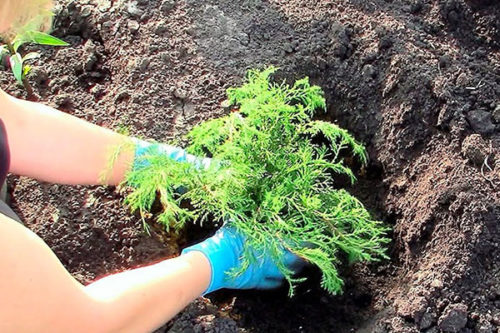
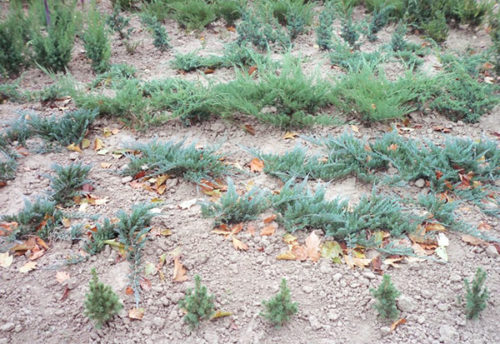
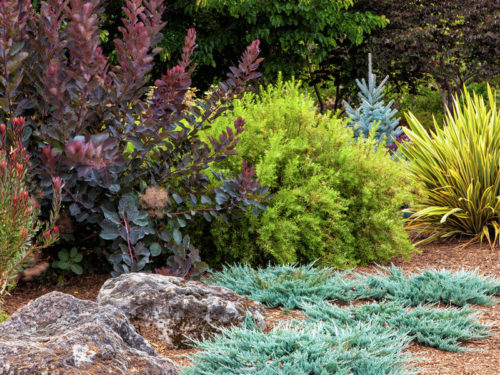
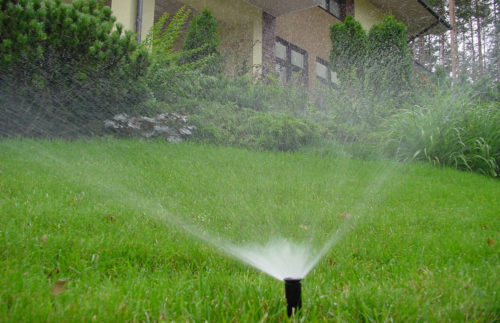
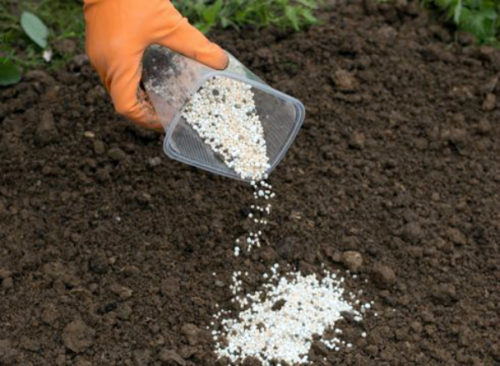
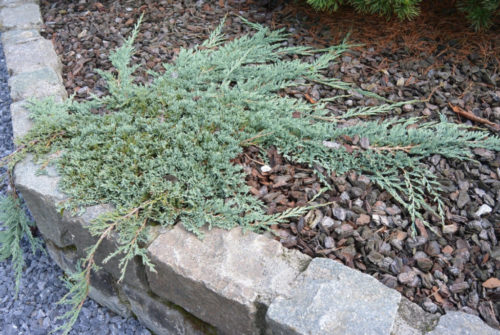

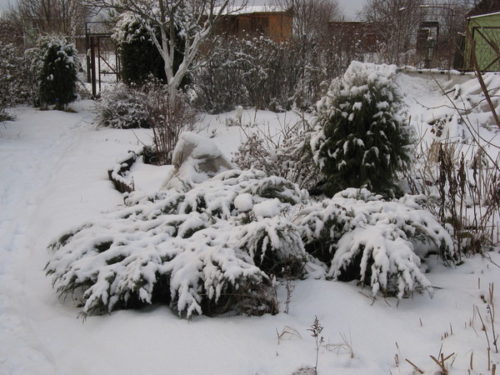
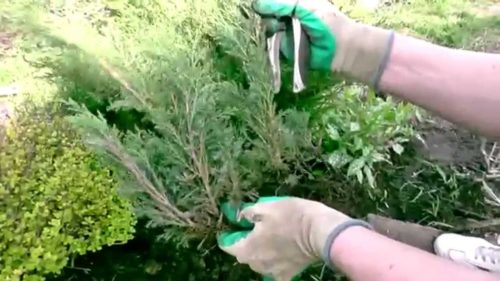
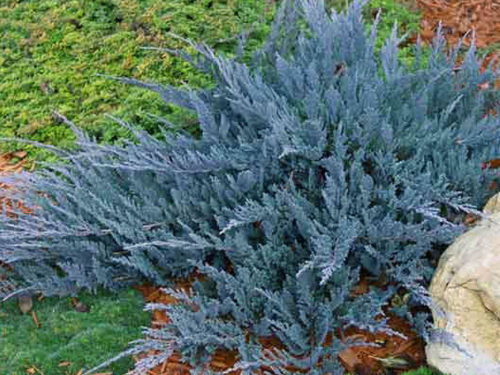
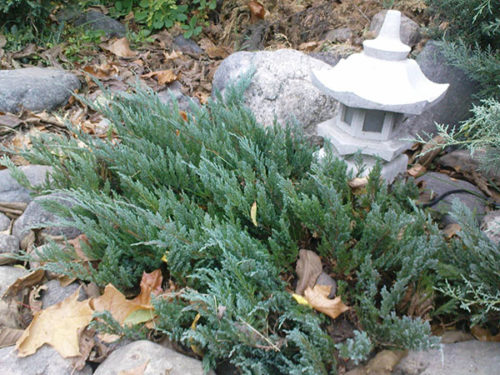
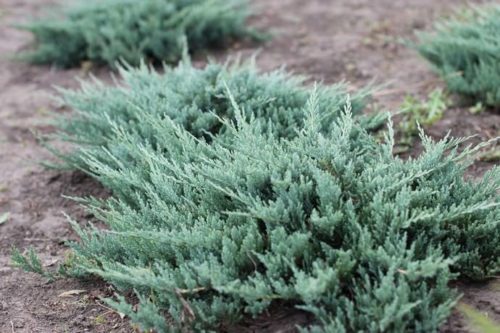
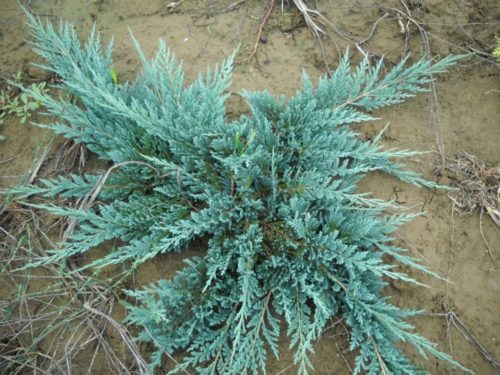
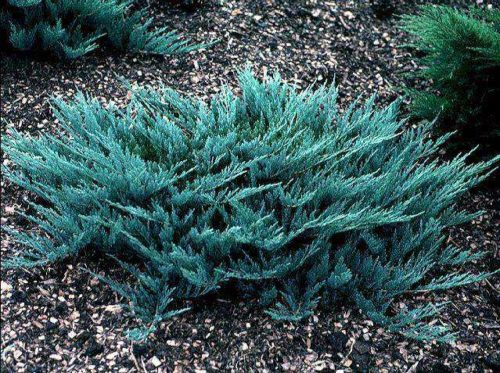
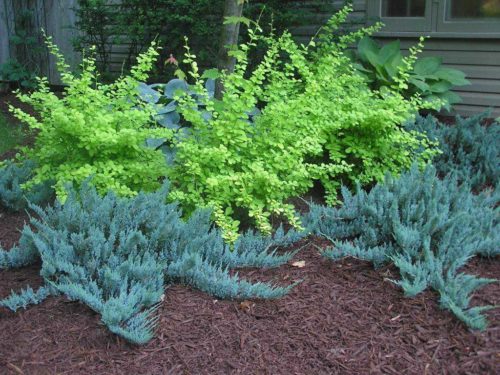
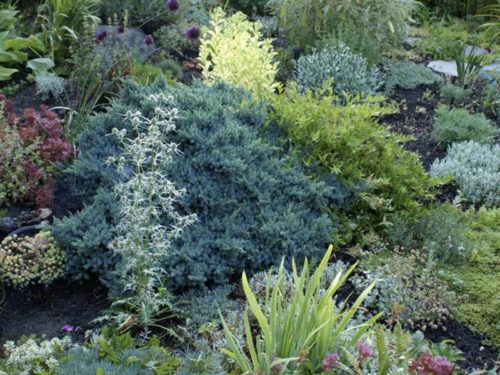

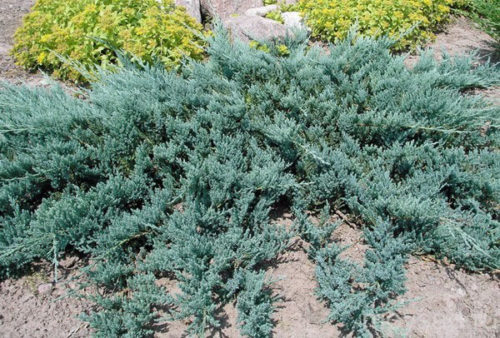












 Start a discussion ...
Start a discussion ...